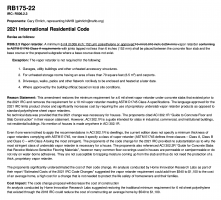Woodrow
SAWHORSE
Is everyone enforcing this code? I am in SC and we enforce it. We do slab inspections and packaging has to be on site with proof of the ASTM on it. It seems that we are the only jurisdiction in our state enforcing this. Just curious what every one else is doing.


